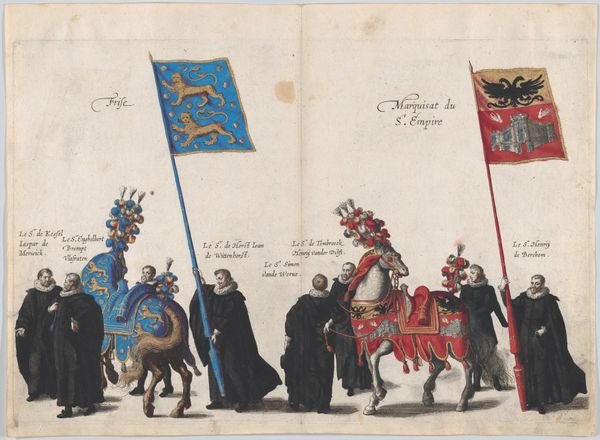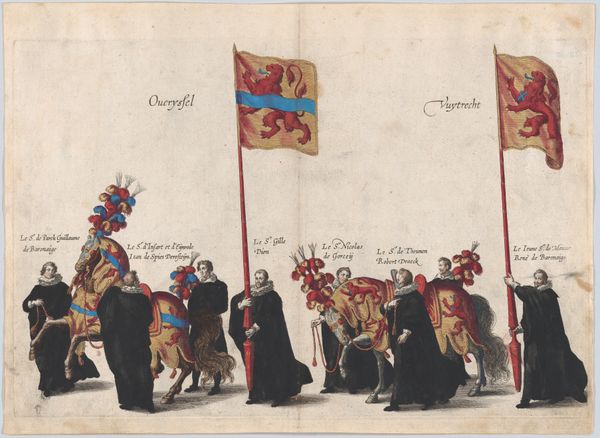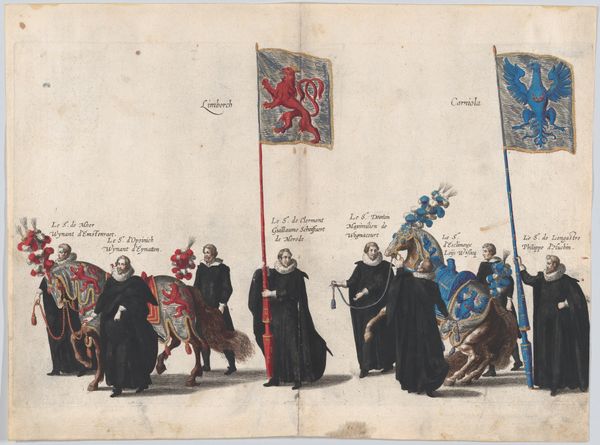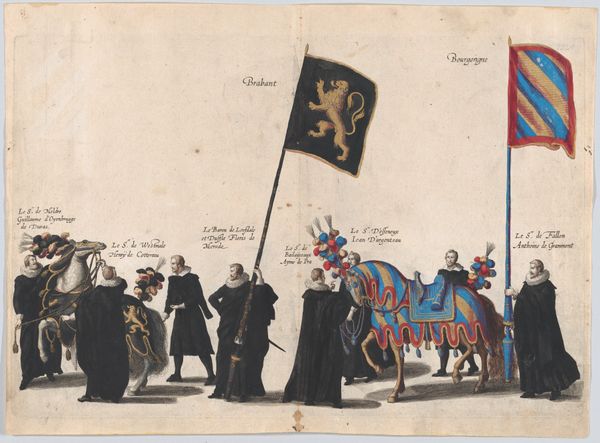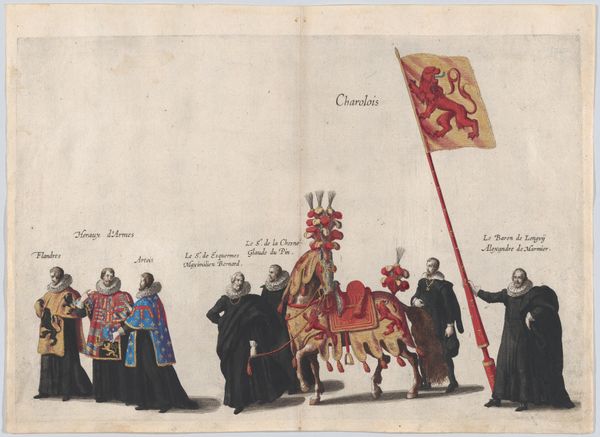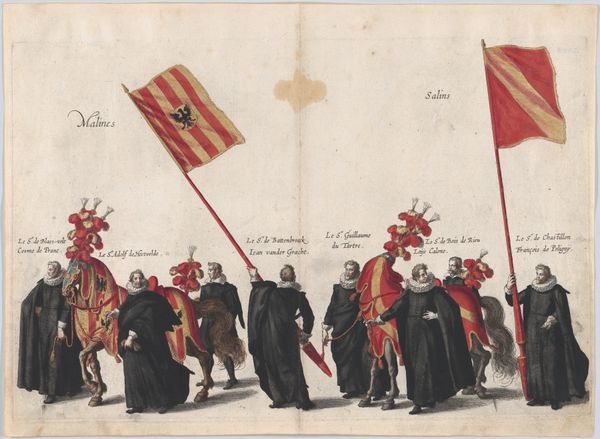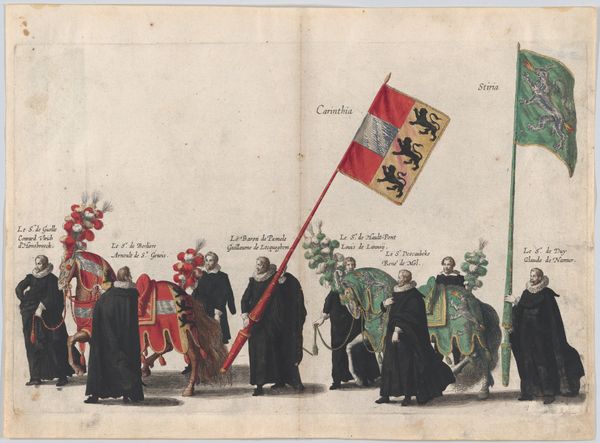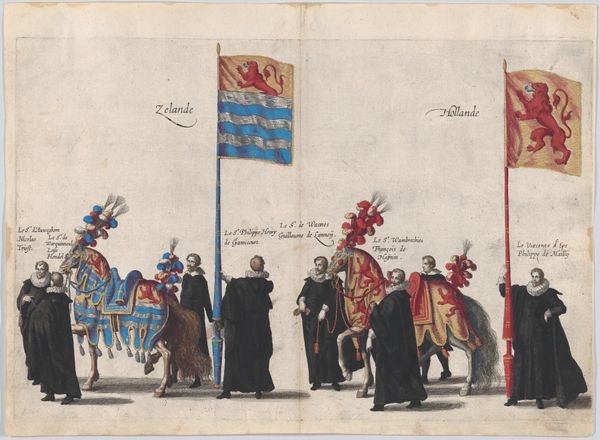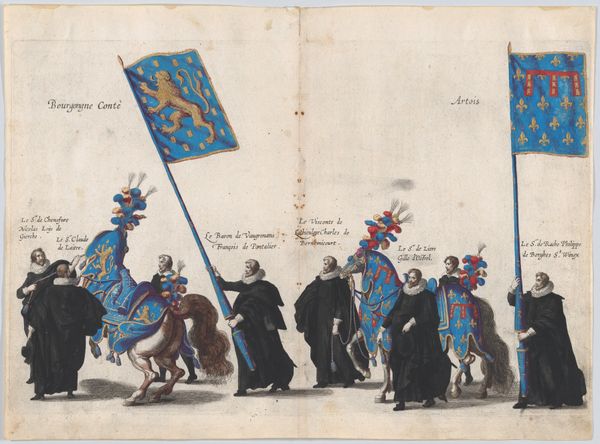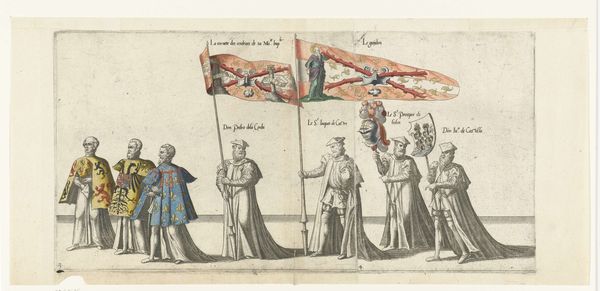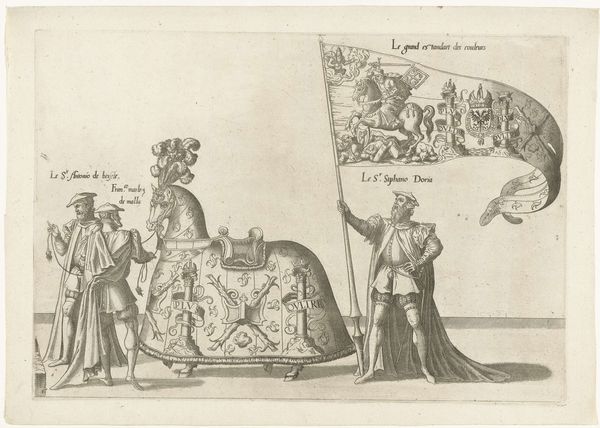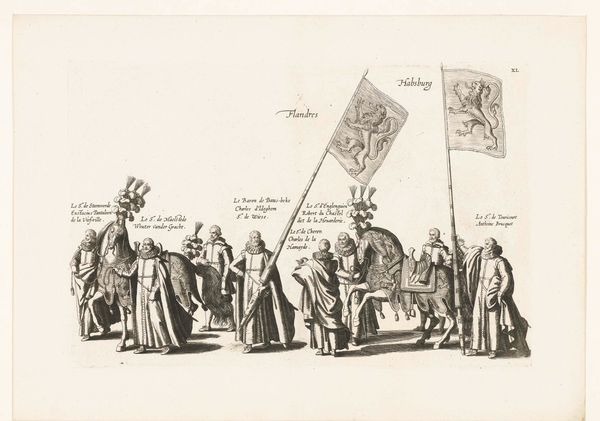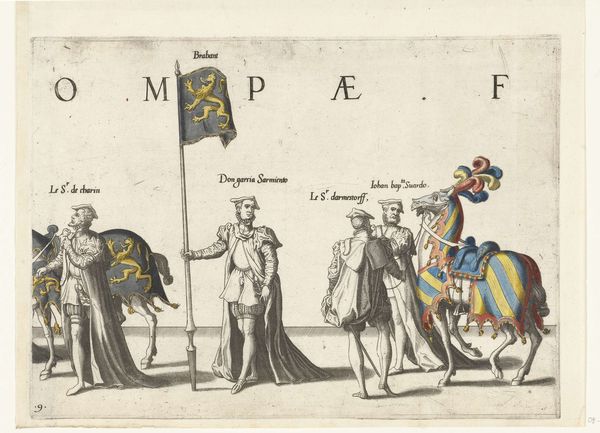
Plate 36: Men with heraldic flags and horses from Zutphen and Namur marching in the funeral procession of Archduke Albert of Austria; from 'Pompa Funebris ... Alberti Pii' 1623
0:00
0:00
drawing, print, engraving
#
drawing
#
narrative-art
#
baroque
# print
#
figuration
#
history-painting
#
engraving
Dimensions: Sheet: 11 3/16 × 15 5/16 in. (28.4 × 38.9 cm) Plate: 9 7/8 × 14 15/16 in. (25.1 × 37.9 cm)
Copyright: Public Domain
Editor: This is Plate 36 from 'Pompa Funebris ... Alberti Pii,' created in 1623 by Cornelis Galle I. It's a print, an engraving, depicting a funeral procession. I find the linear quality of the engraving striking, almost stark despite the pomp and circumstance implied by the subject. What do you see in this piece? Curator: I am drawn to the structural organization of the composition. Note how Galle has meticulously arranged the figures and horses in distinct groupings, separated by the heraldic flags representing Zutphen and Namur. This division emphasizes the piece's internal logic. Observe the contrasting textures achieved through the engraving technique; the smooth surfaces of the figures' robes against the more intricate patterns adorning the horses and flags. Editor: So you're focusing on the form, the relationships between the elements rather than necessarily what the procession *means*? Curator: Precisely. The symbolic weight, while undeniably present, is secondary to the visual syntax at play. Consider, too, the use of line: how it defines form, creates shadow, and ultimately constructs the visual architecture of the image. What visual echoes do you find across the planes of this composition? Editor: The repetition of the lion motif – on the flags, the horse coverings – that certainly provides visual unity. Also, the consistent black robes offer a kind of rhythmic counterpoint to the ornate decorations. Curator: An astute observation. These visual rhythms contribute to the overall balance and harmony. Ultimately, the engraving presents a carefully constructed tableau. It allows us to analyze Galle’s mastery over line, texture, and composition, revealing a sophisticated understanding of visual language. Editor: That's helpful. I hadn't considered analyzing it on a purely formal level before thinking about the historical context. It definitely offers a new perspective. Curator: Indeed, art invites varied readings depending on one's theoretical position. Each can enrich the overall understanding of a piece.
Comments
No comments
Be the first to comment and join the conversation on the ultimate creative platform.
